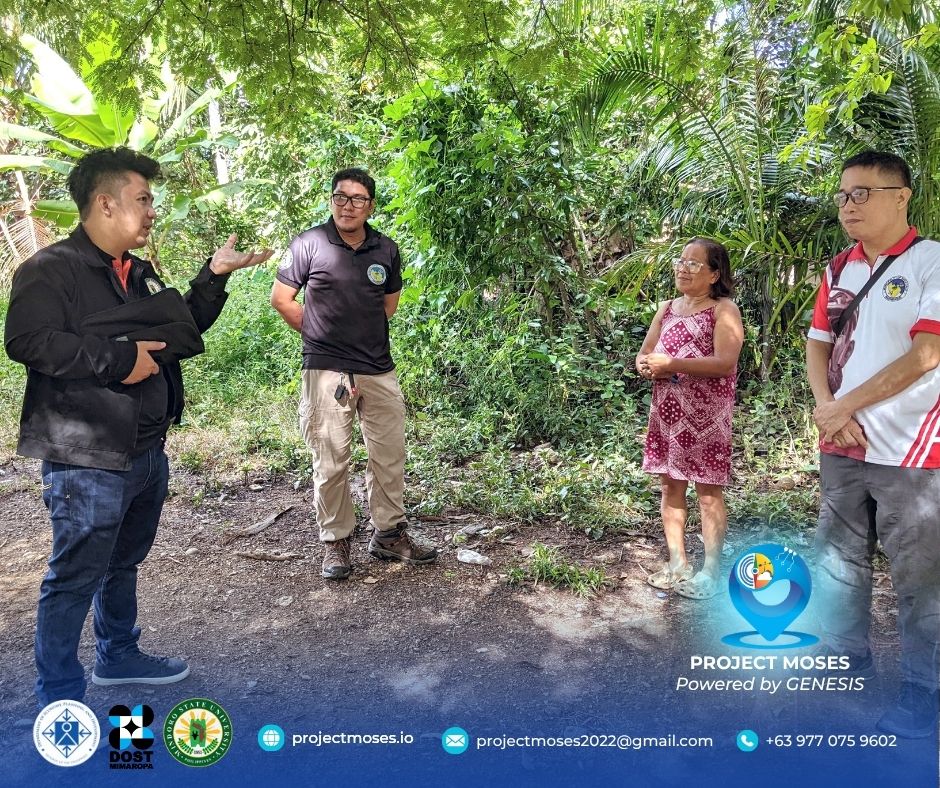
As part of ongoing efforts to enhance climate resilience and disaster preparedness in Marinduque, Project MOSES - powered by Mindoro State University’s (MinSU) Project GENESIS - has officially begun expanding in the province. The initiative, a collaborative effort of MinSU, DOST-MIMAROPA, and the Department of Economy, Planning, and Development (DEPDev) MIMAROPA, aims to deploy Filipino-made e-weather stations across strategic locations to provide real-time, localized weather monitoring.
The expansion was set in motion following a collaborative meeting on September 8, 2025, between DOST-MIMAROPA, the Provincial Disaster Risk Reduction and Management Office (PDRRMO) Marinduque, and MinSU. During the meeting, stakeholders discussed strategies to strengthen disaster preparedness and improve data-driven weather decision-making in the province.
Led by Engr. Christian B. Hernandez, the MOSES team recently conducted a site-suitability assessment on October 8 and 9, 2025 across the six municipalities of Marinduque. The said site assessment aims to evaluate potential locations for the installation and deployment of localized weather monitoring systems under the MinSU Localized Synoptic E-Weather Station Deployment. Seven strategic sites were identified ensuring optimal coverage and maximum impact for local disaster management offices (DRRMOs) in the province.
In an interview, Engr. Hernandez explained how the MOSES e-weather stations will contribute to disaster risk reduction efforts in the province.
“With the e-weather stations in place, local DRRMOs in Marinduque will be equipped to monitor key weather parameters in real-time,” he said. “These include solar intensity, atmospheric and soil conditions, wind dynamics, humidity, and rainfall. Such data is crucial for detecting potential hazards like flooding and landslides and issuing timely community alerts,” he said.
He emphasized that beyond monitoring, the stations will also strengthen long-term planning. “Historical weather data contributes to hazard mapping, risk modeling, and climate-resilient development planning,” Hernandez added.
When asked how DRRMOs can utilize the stations during emergencies, Engr. Hernandez noted the technology’s ability to support rapid and evidence-based response:
“The system allows emergency teams to track changing weather conditions at the local level. This enables faster evacuation advisories, identification of the most affected barangays, and more targeted deployment of rescue personnel and relief goods.”
He added that real-time monitoring also assists in assessing risks from rising water levels and landslide-prone zones, giving responders clearer situational awareness during storms and prolonged rainfall events.
Following the assessment phase, Project MOSES will move toward installation and calibration of the weather stations in accordance with World Meteorological Organization (WMO) standards. Training and capability-building for DRRMO personnel will also be rolled out to ensure continued operation and meaningful use of weather data in local decision-making.
Looking ahead, the initiative aims to support broader data integration and climate adaptation efforts across MIMAROPA.
“Our vision is to institutionalize a data-driven culture of disaster preparedness,” Hernandez shared. “By strengthening inter-agency data sharing, we contribute not only to provincial resiliency but also to regional and national hazard mapping and planning efforts.”
The rollout in Marinduque forms part of MinSU’s ongoing Project GENESIS vision to develop a renewable energy-powered, IoT-enabled regional weather monitoring network across MIMAROPA and eventually nationwide. The initiative underscores the shared commitment of MinSU, national agencies, and local government units to advancing science-based and technology-driven solutions for community resilience.
As climate challenges continue to intensify, Project MOSES stands as a testament to collaborative, innovative action toward safeguarding communities and building a more resilient future.
Photo courtesy | Project MOSES
#SDG9 #SDG11 #SDG13 #SDG17
302 Staff
10531 Students
9 Colleges
4 Years